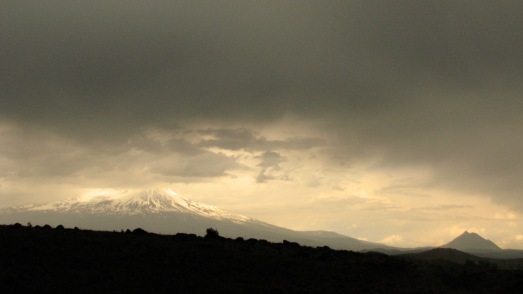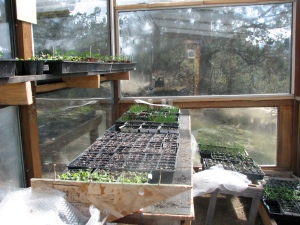To lie dormant is to still be active. A seed in the ground is never lazy, is never undoing it’s place, but storing, planning, absorbing, is stable and purely patient. I would like to say that I have not posted on the blog due to dormancy, that I’ve been succeeding in the challenge of seedism, of being anchored and to be still with simply being, to be abiding by the energy within and the patience in holding, to know when to rise up. But, I’ve not been a dormant seed. I deeply know I have a lot of wisdom to glean from the germplasm that buzzes with perfection in place. I’ve been rising too much, a novice, a puppy, always going, doing, beyond-being antics and I have not made use of the beautiful resource of time. Time to sit, time to write and speak for the farm during these handful of months.
Although I have not been a stoic seed, they’ve been squarely on my farming fore front. While on vacation to Thailand, in the fall, Jonathan and I came across many open air markets, the heirloom grocery store. The produce was stunning, truly a treat for plant lovers and flavor dreamers. The rices, greens, fruits I never knew could exist, fish, meats, and at one market we found a sweet woman selling seed. I also brought some packets of seeds from the farm and using only speaking the language of seeds we exchanged with each other, not only hundreds of plants to be, but a maternity for the land and a reverence for something that in the present reality is small, but in the dimension we both know well, was more expansive than description.
This is also the time of year to visit the farm’s seeds, packed away, undisturbed in cool corners. The evolution of the farming seasons, this will be my sixth, can be quantified and represented by the size of the vessels that hold these seeds. From shoe box, to tubs, to the present three large Rubbermade bins. It’s a fun ritual, spreading it all out, placing packets in the future fields. These seeds will tell the story of this season. They will feed the CSA, customers at the Farmers’ Market, patrons at local restaurants and grocery stores. These seeds will thrive under the elements and farmer and will also die off from these two roots. Saved seed lots from 2014 were tested for germination and packaged up to feed locals in a different way. These packets of seeds that will travel to homes to be planted out in backyards and containers. Sowing future family meals and opening the story book of connection with seed, food, and our culture of agriculture. Throughout the seasons chapters may even be added to this book, or rekindled, as this is the story of our ancestors. It is a story we all already carry. We are the story of seed! And seeds are a story of who we are.
A burgeoning revolution is here. Not the hijacked tone of the Green Revolution, an honest uprising of a trinity of voices: our ancestors, the seeds and ourselves. The conversations about food are abundant. The education is saturating, the lexicon of knowledge and the desire for more knowledge is increasing. People are curious to know if the food is local, non-spray or organic and every once in a while I hear is what I feel is the gem, “Is this a Torpedo onion?” “Is this Red Russian kale?” “Is this Genovese basil?” And here, is why to my farming ears (to my ears that have a deep love for education and the passing on of stories ), this is a gem. People are getting to know their food! In German, there are two meanings for the word ‘know.’ One know is the verb wissen; wissen is if you know where the closest bookstore is. And then there’s kennen; the verb kennen is used when you know someone or something personally. You know their energy, their feel. Kennen is knowing beyond knowledge, the realm of the brain. Kennen is that you know something in your heart. When someone asks me the specific variety of a vegetable, they are knowing (kennen) their food by heart. My desire in this revolution is that we start to ask deeper. To ask where our food is grown and the practices by which it was grown, to call food by its name, to ask the story of the seed the story of the variety! To ask who grew the seed, how was the seed grown and what’s the story map of the seed?
It is the time of year to open the book, to read the seed story, our story and to learn. To sit with the seed. To be, be still. To be anchored. To know when to rise up and authentically stretch out in growth.
































